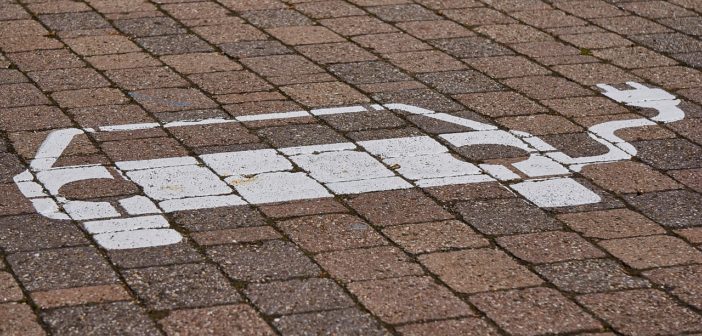Imagine a few years from now. You can buy a car that often needs charging but it can be fast charging or you can choose the opposite. You only need to charge one-third of the number of times so you do that at home, at the hotel or supermarket, never in the street, once a month or less. It is a no-brainer – less charging beats fast charging any day. Put it another way. You want to vacation around Scotland or even large countries like Australia, Canada, even live there. Would you prefer a car with 600 miles/nearly 1000km range or half that?
Fast charging is all the talk now but doubling then trebling the range is seismic. The world solves its problems by eliminating infrastructure. The new IDTechEx report, “Routes to 1000 Mile (1600km) Battery Electric Cars 2021-2041” spells it out.
Raghu Das CEO of IDTechEx explains, “Initially, it is primarily a matter of fitting larger batteries in simplified formats with better battery management software as they become affordable. However, taken together, further lightweighting, simplification, new components, and all-over solar body will increase range almost as sharply. No matter that the major impact of solid-state batteries will be after 2030 in our assessment – huge gains are coming before that.”
He continues, “Many cars do 320 miles/ 515km today. Make that a relaxing 500 miles (805km) from many premium car makers in 2023 so the average driver charges about once a month. We predict a wide choice of cars with 760 miles (1224km) in 2031. This is a big deal because most people live in apartments in cities with no hope of their own charger. They can never again suffer the misery of street charging. With long-range, your car charges at destination delaying you not at all. Bear in mind that a car with barely adequate range can degrade to an embarrassing half the range with combinations of being hot, cold, old, full, driven hard, or towing and its resale value is poor. We calculate the detail.”
IDTechEx heavily discounts the promises of those involved, given their history of over-optimism, but it predicts strengthening demand for range. Expect tripling of today’s range. The enablers of this bring other delights. Lightweighting improves acceleration and cost. Simplifications mean almost no maintenance. Solar bodywork gives gentle users travel without ever using a charging station and the first get-you-home feature. If you drain the battery, you just wait and the body charges the car enough to get to a charger.
Researched by multilingual PhD level IDTechEx analysts worldwide, the unique 285-page IDTechEx report, “Routes to 1000 Mile (1600km) Battery Electric Cars 2021-2041” starts with a self-sufficient Executive Summary and Conclusions. See the many other reasons for increasing maximum range and the existing and planned technologies to achieve it. Detailed infograms show trends, achievements, research pipeline with roadmaps 2021-2041. See when there will be wide availability of given long ranges and the percentage of cars with them. Quantified are the four primary contributors to the widely available range being 760 miles in 2031, up a startling 2.4 times on today and far beyond in 2041. IDTechEx presents a deep analysis of technical and scaleup challenges and solutions ahead.
Chapter 2 Introduction concerns perpetual cars, relevant smart city issues, geopolitical implications, and iterative methodology for introducing range-extending technologies. A sensible starting point for the detail is Tesla, the world’s most auto valuable company because it got there largely by offering the longest range and it is exclusively focussed on battery-electric vehicles. Chapter 3 “Tesla Holistic Approach” describes how it has achieved range by many small things such as cable elimination, more efficient motors, lowest drag factor, best batteries, and how it will go much further with massive simplification even beyond giant aluminum die castings. See its advice on how to design motors.
Then come chapters on the technologies emerging with many new examples. Chapter 4 is on simplification and lightweighting to increase range. See in-wheel and eAxle motors with integrated power electronics, voltage increase shrinking cables and motors, cable elimination, structural energy storage, in-mold, 3D, transparent and edit-able electronics and electrics, merging components, new battery-cooling achievements, and more, citing Rivian, VW Group, universities, and other innovators.
Chapters 5 and 6 concern solar cars with increased range – best practice, chemistries, research pipeline. This just got serious with major moves by Hyundai, Tesla, Toyota, VW Group, and other giants plus startups selling solar vehicles, not just dreaming. How did Sono Motors get over 13,000 orders by emphasizing all-over solar? The many solar formats and chemistries such as film-wrap or load-bearing are critically appraised and the roadmaps and benefits are compared now and in the future, even unfolding, sun tracking, and super-efficient versions.
The 26 pages of chapter 7 deeply examine batteries and supercapacitors’ increasing range. Here is the structural battery, module elimination, potential disruptors to lithium-ion quantified and criticized, questioning trumpeted solid-state car batteries promised in cars 2024-6. See academic figures for energy density improvement by chemistry into the future then IDTechEx prediction of commercially available energy density by year. Chapter 8 gives 20 company profiles each accompanied by SWOT analysis. This focuses on what they are doing to extend car ranges.
For more information on this report, please visit www.IDTechEx.com/1000mile or for the full portfolio of Electric Vehicle research available from IDTechEx please visit www.IDTechEx.com/research/EV.
Image licensed by: Pixabay.com
Related News:
National Grid Launches Electric Vehicle Road Trip to Highlight Northeast Charging Infrastructure
PC Matic Survey: 20% of Employers Never Require Employees to Change Passwords

